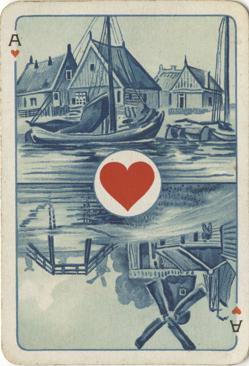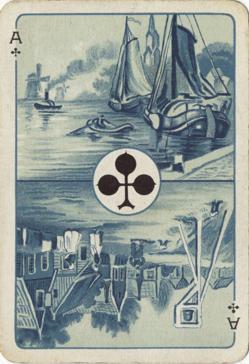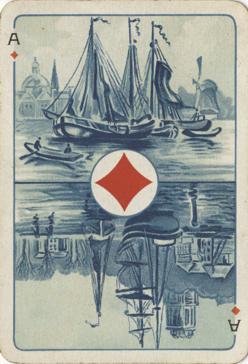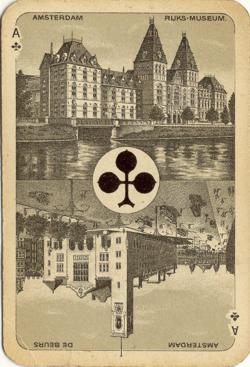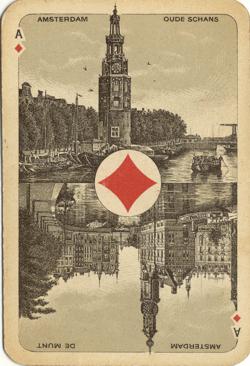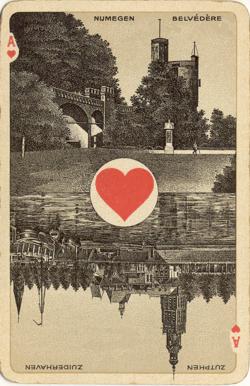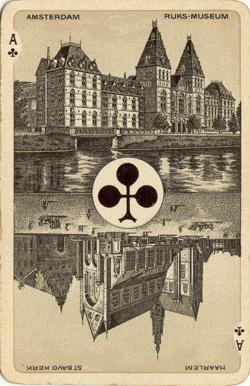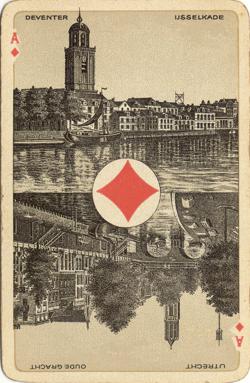INDIGENOUS
SCENIC ACES
"SPEELKAARTENFABRIEK NEDERLAND"
Holland
was a prosperous country in the 17th century. Those days are still referred to here as
"The Golden Century". A few great Dutch playing card makers were known
throughout Europe then: Pieter Meffert and later Jonas Fouquet. In the 19th century
the decline slowly began. The number of small playing card manufacturers
decreased until around 1860, when there were (as far as we know) none remaining.
As
we've seen, playing cards were imported from Germany and Belgium. Firms like
B. Dondorf and C.L. Wüst exported their quality cards for the Dutch market, the
Belgian firms from Turnhout supplied the lesser quality decks for everyday use.
It was in this setting that a new Dutch company would have to find a place in
the market.
On
November 1st, 1906 two Dutch publishers, A.E. van der Heide from Haarlem and W.
van Leijdenroth from Utrecht, and a related printer, the Widow A.J. Leijdenroth
van Broekhoven, founded a new firm: "De Nederlandsche Speelkaartenfabriek".
It was situated in Utrecht. In 1908 mr. Van der Heide retired and in 1909 a new
partner was found in Amsterdam: the lithographer Jos. Vas Dias & Co. who
probably had a greater experience with (chromo)lithography. On March 16th 1909 a
new company was founded: "N.V. Nederlandsche Speelkaartenfabriek en
Steendrukkerij" (further referred to here as NSF). In August the company
moved to Amsterdam, where the factory of a liquidated firm, situated on
Prinseneiland 153-155, provided more production space. It takes about a year
before their products are first offered in a journal for booksellers. The delay
is caused by the new machinery, that had to be ordered and placed, the necessary
(re)building permits, that had to be obtained, and the hiring of new personnel.
On
February 8th, 1911 production is delayed again. A fire destroys the attic and
there was considerable water damage.
Looking at the first few
decks that were published by the NSF it becomes clear that the new manufacturer
was at first aiming at the higher quality cards segment in the market. All these
decks had a special design and were printed in high quality chromolithography,
except for the first
edition of the "Kroonkaart". With a version of the Frankfurt pattern, plain
aces and a lesser quality card, that deck was probably issued to compete with
the cheaper Belgian decks.
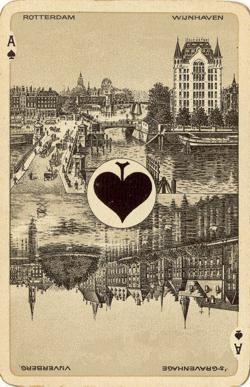 |
 |
|
On the Ace of
Spades Rotterdam is represented by the "White House".
Constructed in Art Nouveau style in 1897, this 10 floor building was the
first skyscraper in Rotterdam and.... Europe. A worthwhile scene in the early
1900’s. To our knowledge there's only
one other ace with a view of this building and that is on one of the
Dutch scenic aces, which came with a deck by an unknown, possibly Dutch,
manufacturer. It's shown further on in the article.
The first restyling of the original Neerlandia deck was done in December
1916. All the Queens (see QH) were re-designed and the cards were
slightly narrower. This version of the pattern was classified as "Neerlandia B". The second restyling of the Neerlandia deck was
probably done in 1917. This time the Jacks were re-drawn. The feathers
on the hats of the Jacks were clipped and the hair (moustaches included)
of the Jacks was also trimmed (see JC). This version is classified here
as "Neerlandia C". |
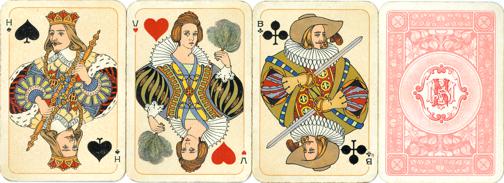 |
This deck
was printed in lithography by SN and published around 1910. The pattern
is called "Dietsche Kaart" and usually comes with a set of
aces illustrated with emblem-like decorations.
But this deck was published by the NSM, a Dutch shipping line, and it
has a set of scenic aces. This same set was used in later NSM
publication, together with the "Amstel" version of the Fortuna
cards by SN (see page SN 09-12). However, the aces of Hearts and Clubs
have been scanned upside down with a good reason. Here they show views
with the MS Vondel in Amsterdam and Genoa. These scenes don't appear in the
other set, while all the other views are exactly the same. |
|
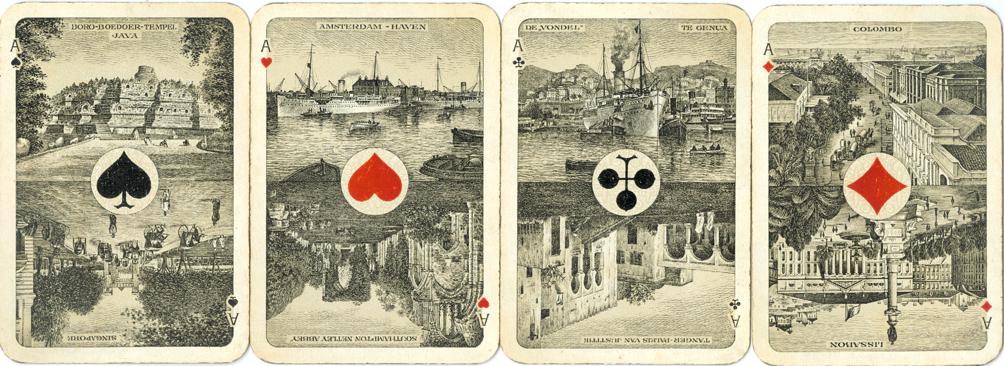
|
previous or
next


